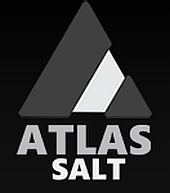 Tiny BC company sees big future in battery recycling
Tiny BC company sees big future in battery recycling

A tiny Surrey, B.C.-based company believes it may have the solution to two of the major roadblocks to widespread adoption of electric vehicles (EVs)—a shortage of the minerals needed to manufacture the batteries needed for EVs and the ecological damage caused when old batteries are sent to landfills.
American Manganese Inc. (AMI), which began life as a website developer during the dotcom days of the early 2000s, then shifted to become a manganese miner, now has shifted to developing and piloting a technology to recycle batteries.
Larry Reaugh, president and chief executive officer, who has led the Toronto Venture Exchange-listed company through all of those stages, said its tortured background, highlighted by its attempt to develop a manganese mine in the U.S., led directly to the development of its technology, for which it has filed for worldwide patents.
Reaugh, who has a mining background, said the company first tried to develop a manganese mine in Arizona, a move that made it aware of the future demand driver for manganese, a key component of EVs, along with lithium, nickel, cobalt and aluminum.
The company bought a low-grade manganese mine in Arizona and began to plan its development.
The grades were in the range of two to three per cent, so low that it normally couldn’t compete with China or other countries with manganese grades much higher.
“Anywhere else in the world, you wouldn’t even look at developing a mine with grades so low,” said Reaugh.
The only way to develop such a low-grade manganese mine was to develop a technology that simplified the mining process.
AMI worked with Richmond, B.C.-based Kemetco Research, a technology development company, to develop a technique to produce manganese economically, “but the economics defeated us,” said Reaugh.
But all was not lost, since Kemetco was convinced the same basic approach would work by targeting cathode materials from lithium-ion batteries, which are the ones used in the EV space.
Cathodes include lithium cobalt, lithium nickel, manganese cobalt, lithium manganese, lithium nickel and other materials. Right now most of those materials, with the exception of some cobalt, end up as waste products.
American Manganese and Kemetco deploy a technology called hydrometallurgy to process and separate those materials, using thickeners, tanks and pumps.
Reaugh says the process can work to extract 92 per cent of the lithium and he believes that will rise to 100 per cent.
The technology is cost-efficient, costing an estimated 25 to 30 cents per pound, he said.
Meanwhile, a 1,000-pound lithium cobalt battery has about $6,000 worth of cathode material in it, while a similar sized nickel-manganese-cobalt battery has about $3,500 worth. Both are commonly used to power EVs.
One wrinkle is the cost of disassembling batteries, which come in various shapes. Reaugh said it would help in recycling if the sizes can be standardized.
There’s an incentive for auto companies to do this, since they need to pay now to have batteries and the materials in them sent to landfills or elsewhere and AMI will likely take them off their hands without cost.
As it is, battery manufacturers (there are dozens of them worldwide) must deal with serious environmental issues when they dispose of cathode materials in the waste stream.
“If you’re a battery manufacturer and you’re not recycling the battery material, you’re polluting,” he said.
The company’s latest plan is to take the foil from batteries, which contain pure ingredients (unlike mined minerals). They are paper thin and would be relatively easy to process.
“Also, we can ship those anywhere in the world, at a marginal cost,” he said.
The basic premise behind recycling is that, as EV use grows, shortages of materials such as cobalt and lithium could become acute.
But the problem is that the EV market is so new, with about one million a year sold worldwide, there are few old batteries to recycle. That is expected to change by 2025, with a forecast that at least 14 million EVs will be sold worldwide by then.
Benchmark Mineral Intelligence has predicted that the industry will need an extra 30,000 tonnes of cobalt and 81,000 tonne of lithium per year to meet demand by 2021.
Commodity research firm CRU has forecast that about 17.9 per cent of the total market supply of cobalt could come from recycling by 2021.
It believes recycling will not be a major factor in the sector until there is a critical mass of old batteries.
In addition, current recycling technologies involve heating old batteries, in a process called pyrometallurgy, which only yields cobalt and some nickel, while lithium is difficult to extract.
There are established companies involved in the recycling business, such as Belgian-based Umicore, which operates a pilot plant that processes about 35,000 EV batteries yearly.
Reaugh estimates there are about 280,000 spent EV batteries entering the waste stream yearly.
He believes its process, used to process foils, would be economic even now and would be very profitable as EV use grows.
The company, along with Kemetco, wants to develop a $5 million pilot plant in B.C., with plans to then develop a commercial plant that could process three-five tonnes a day of materials.
The commercial plants would be portable and could be moved to the sites of EV manufacturers or battery developers.
It is attempting to raise the funding for the pilot plant.
“We’re hoping a big recycling company or even an oil and gas company shows interest,” he said. “It would be a way for an oil and gas company to diversify.”
In May of 2016, French-based oil and gas giant Total bought Paris-based battery maker Saft for US$1.1 billion, which he said shows such a move might be logical.
http://www.jwnenergy.com/article/2017/11/tiny-bc-company-sees-big-future-battery-recycling/
http://americanmanganeseinc.com/news-publications-2/press-releases-2/
































